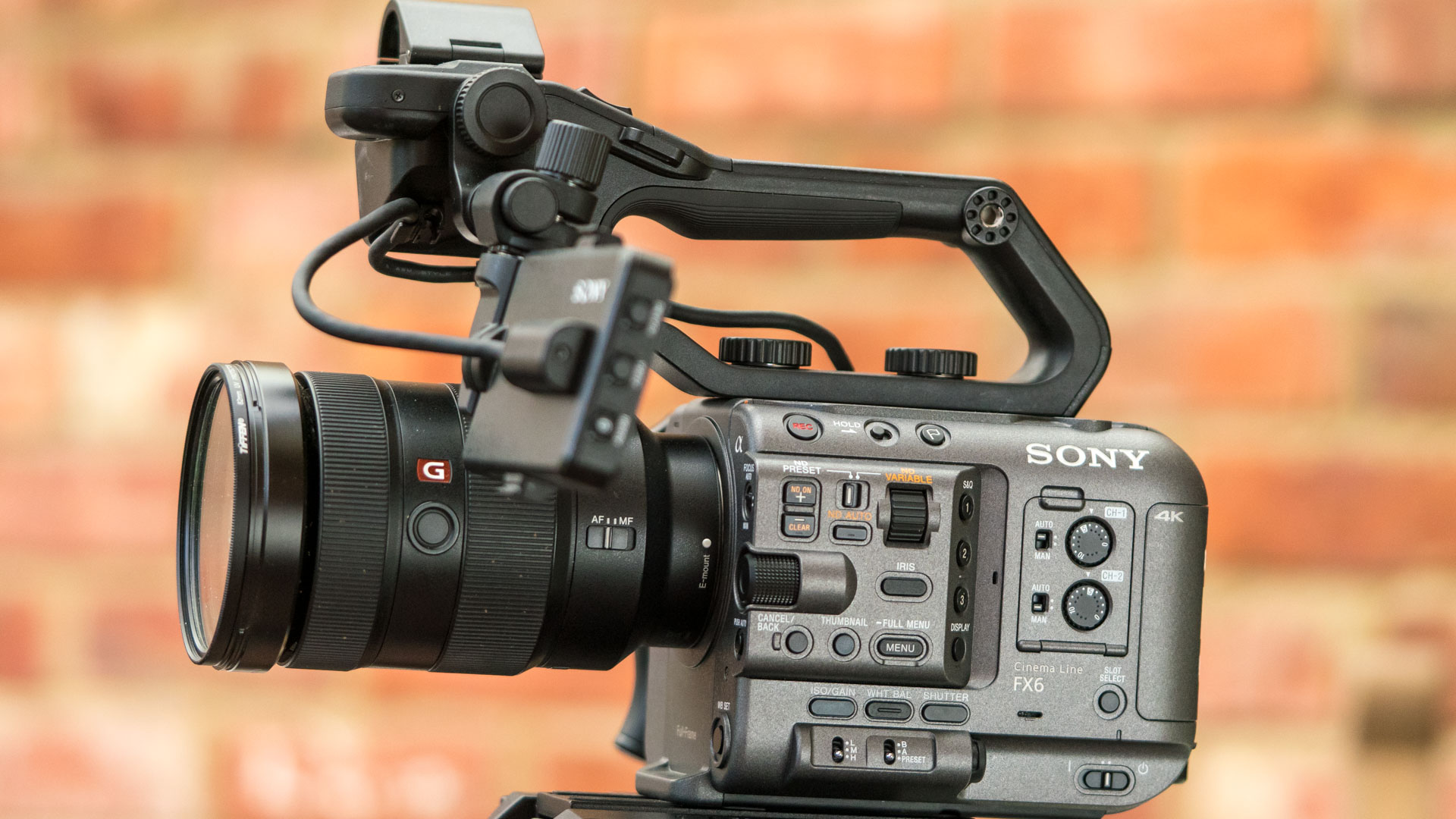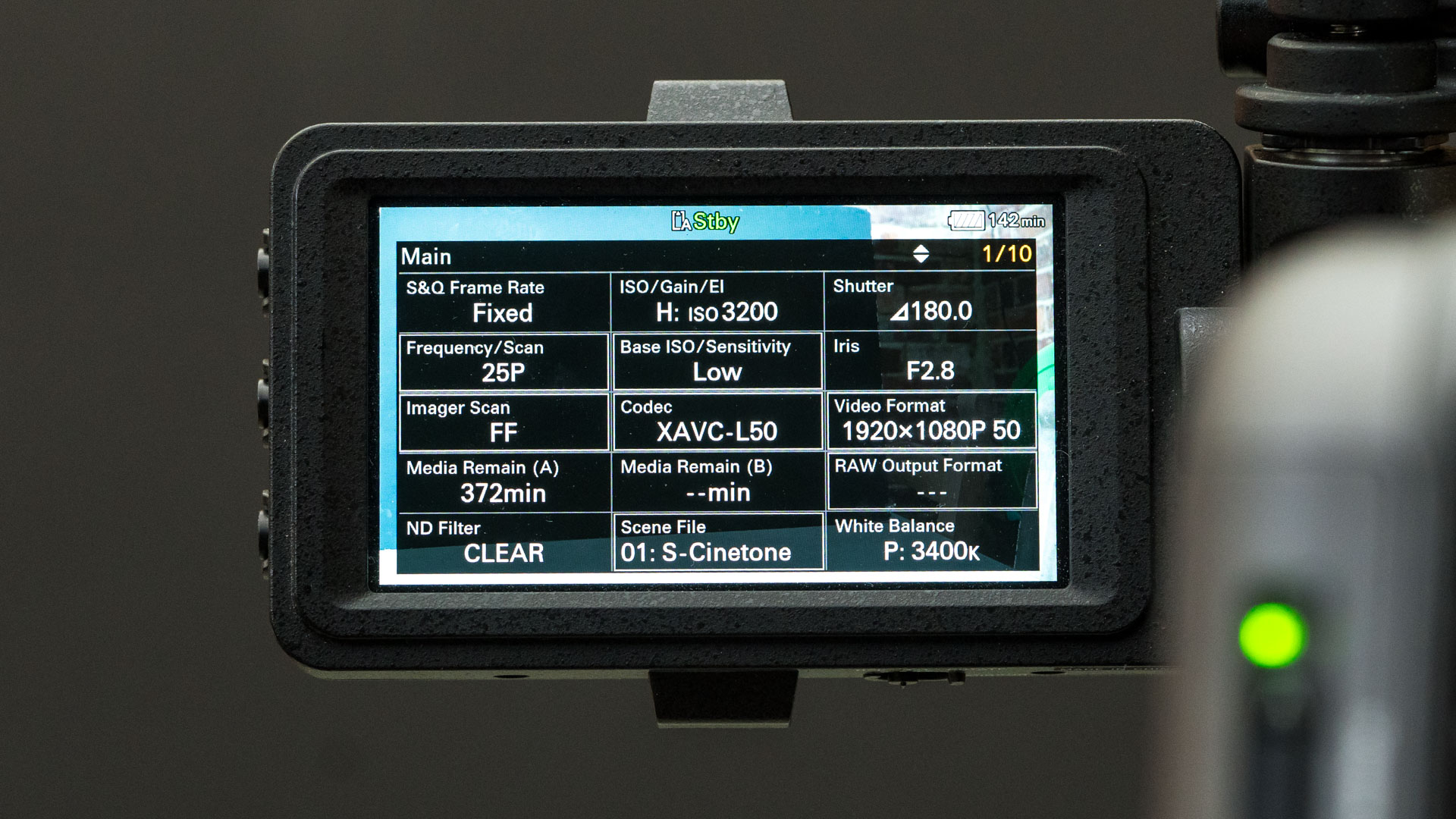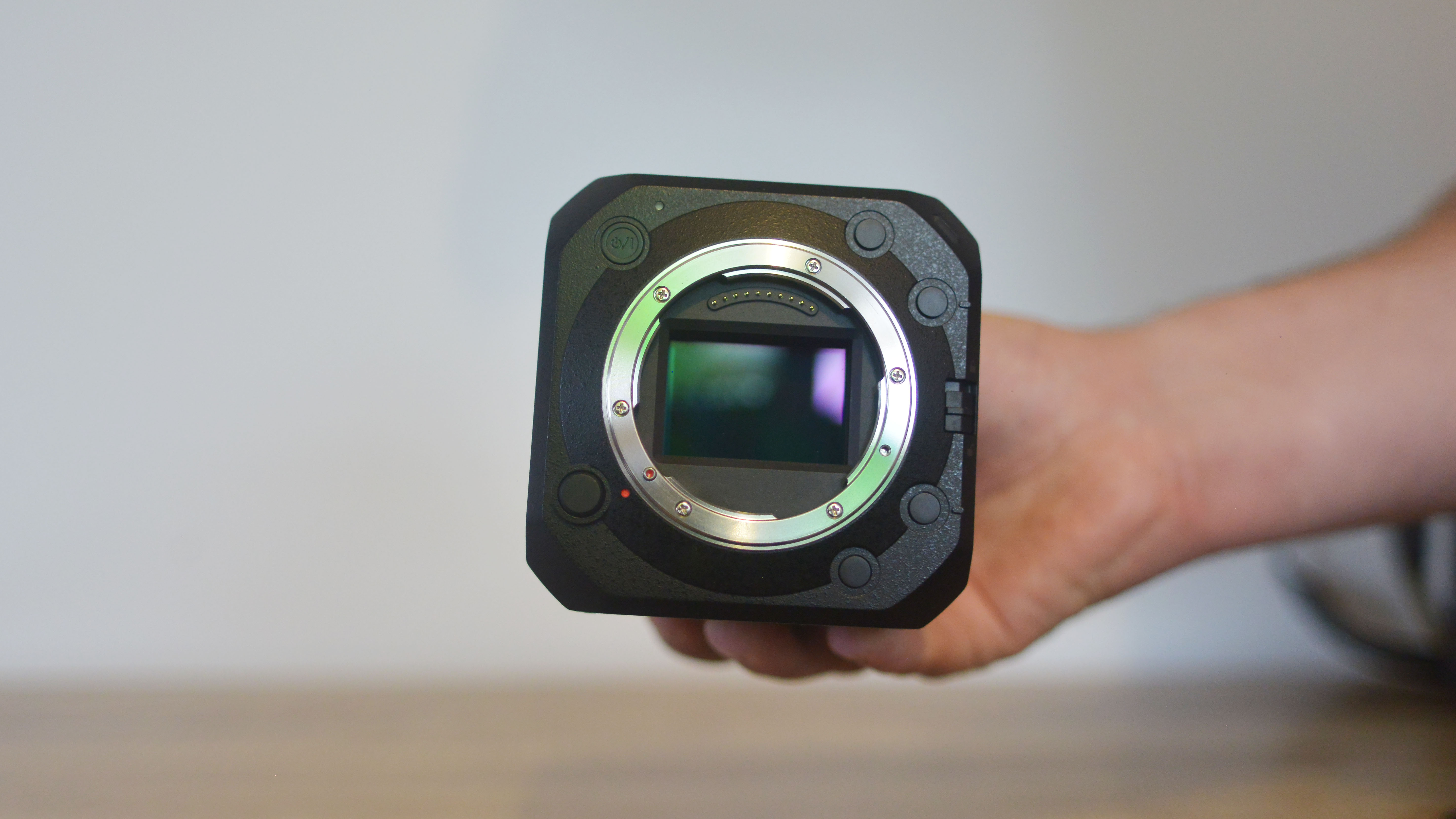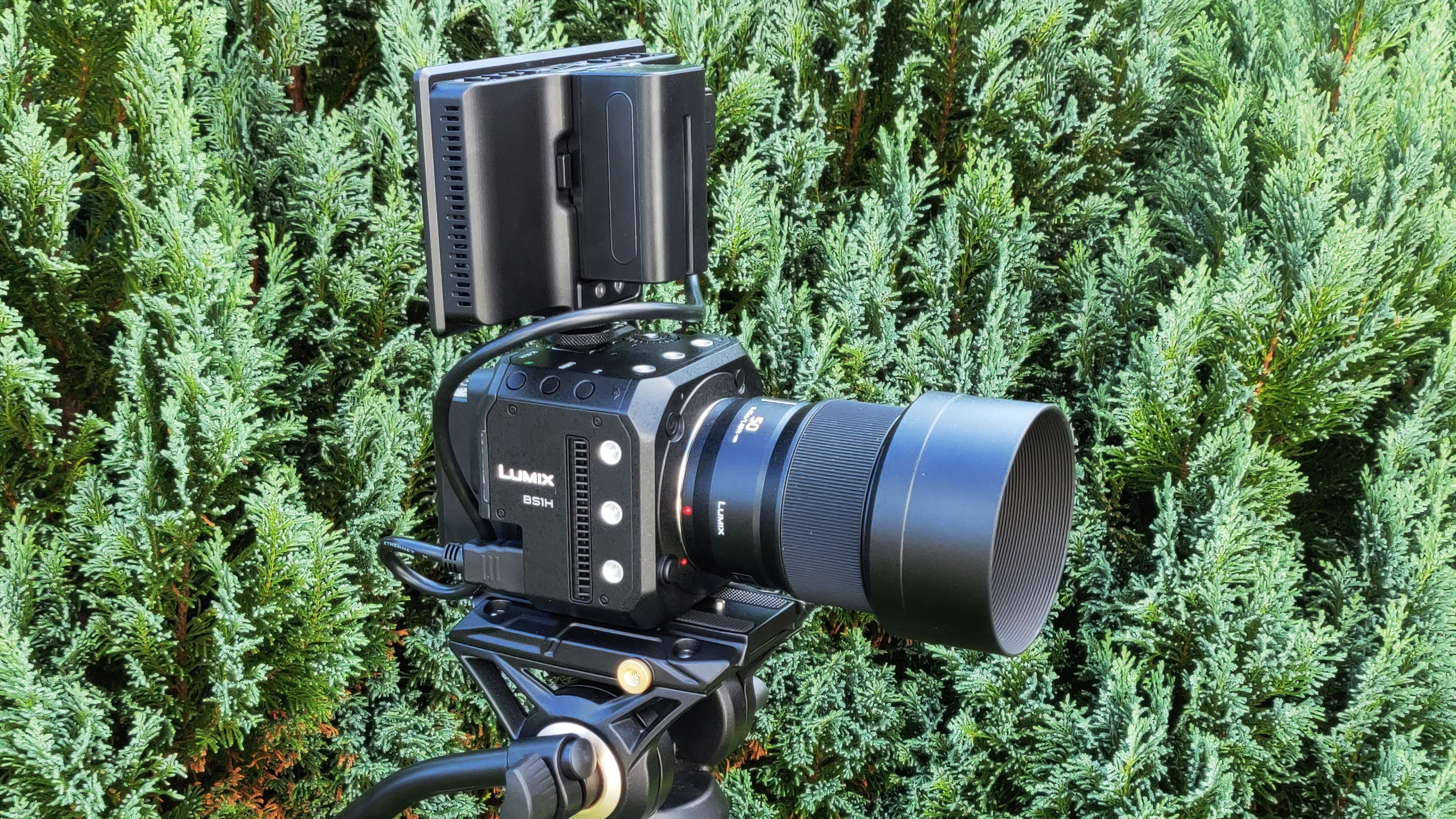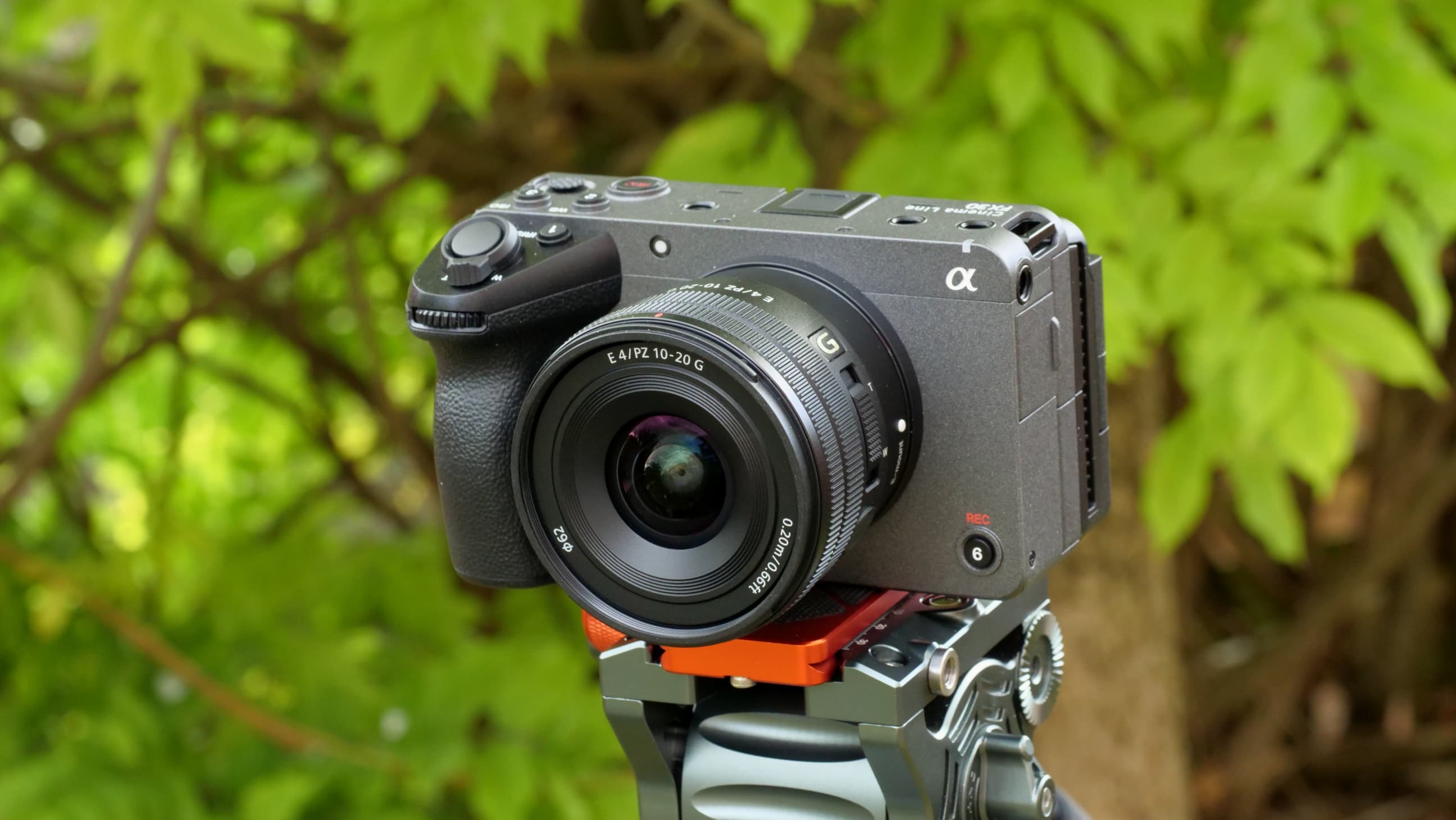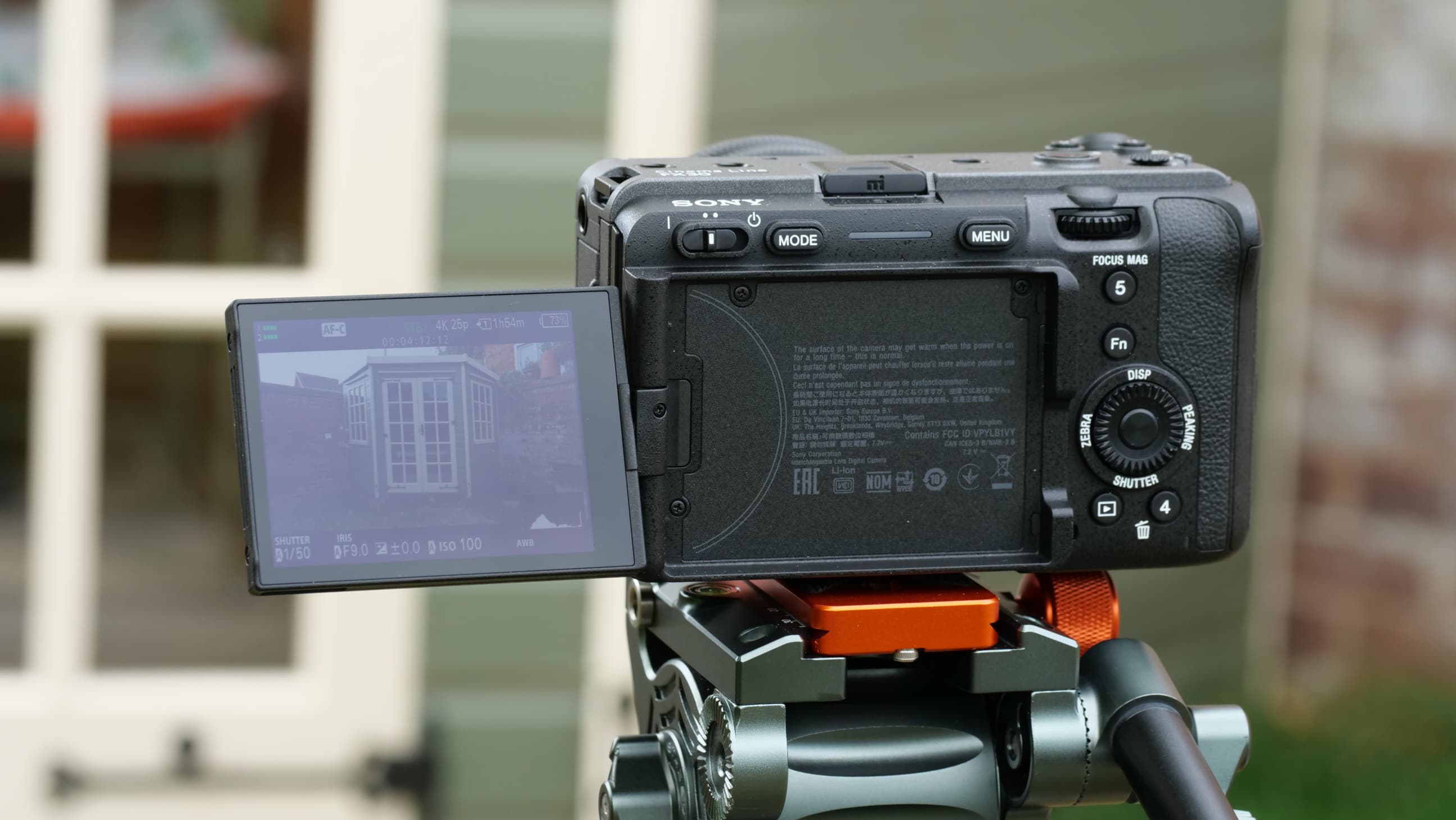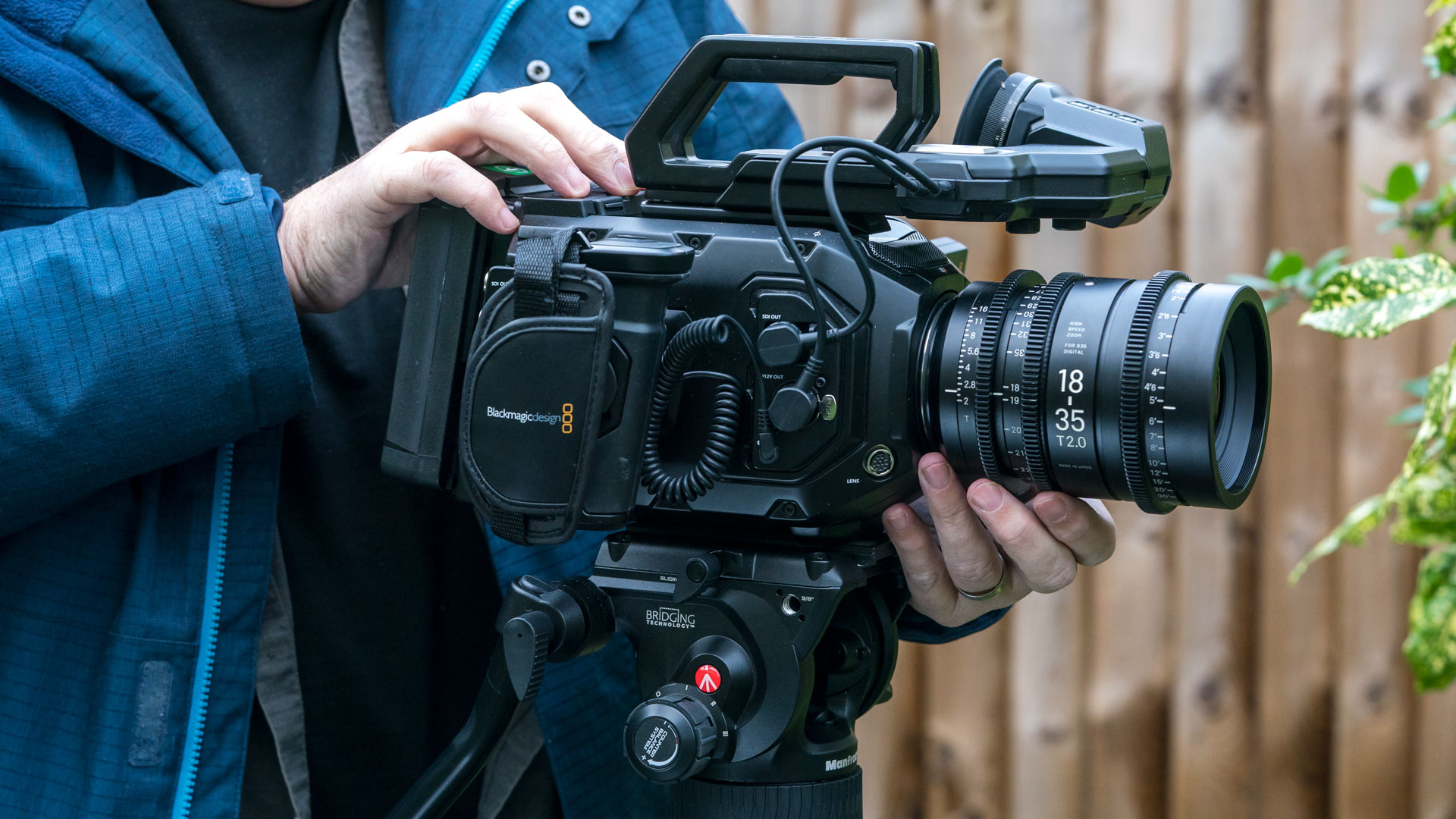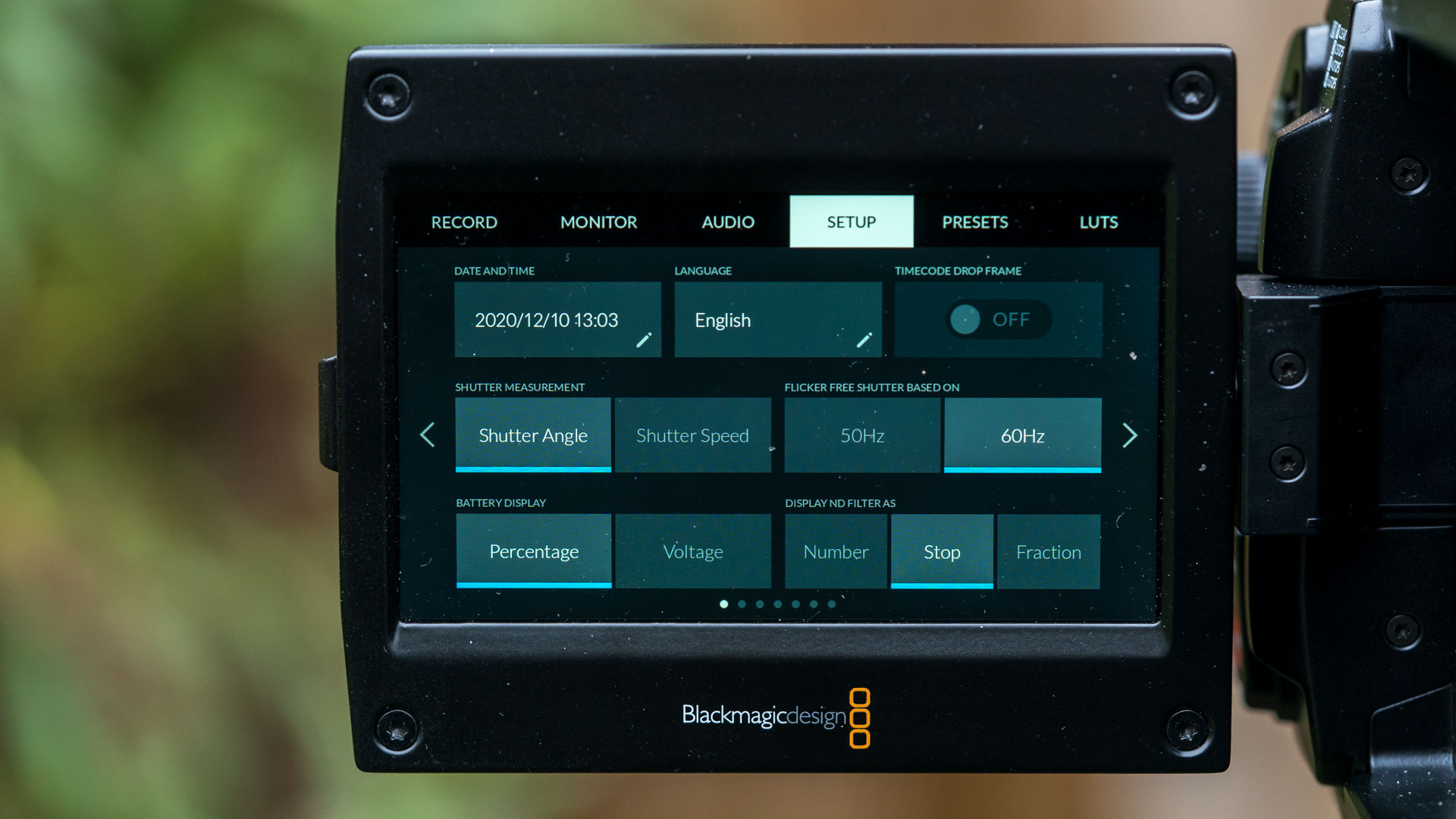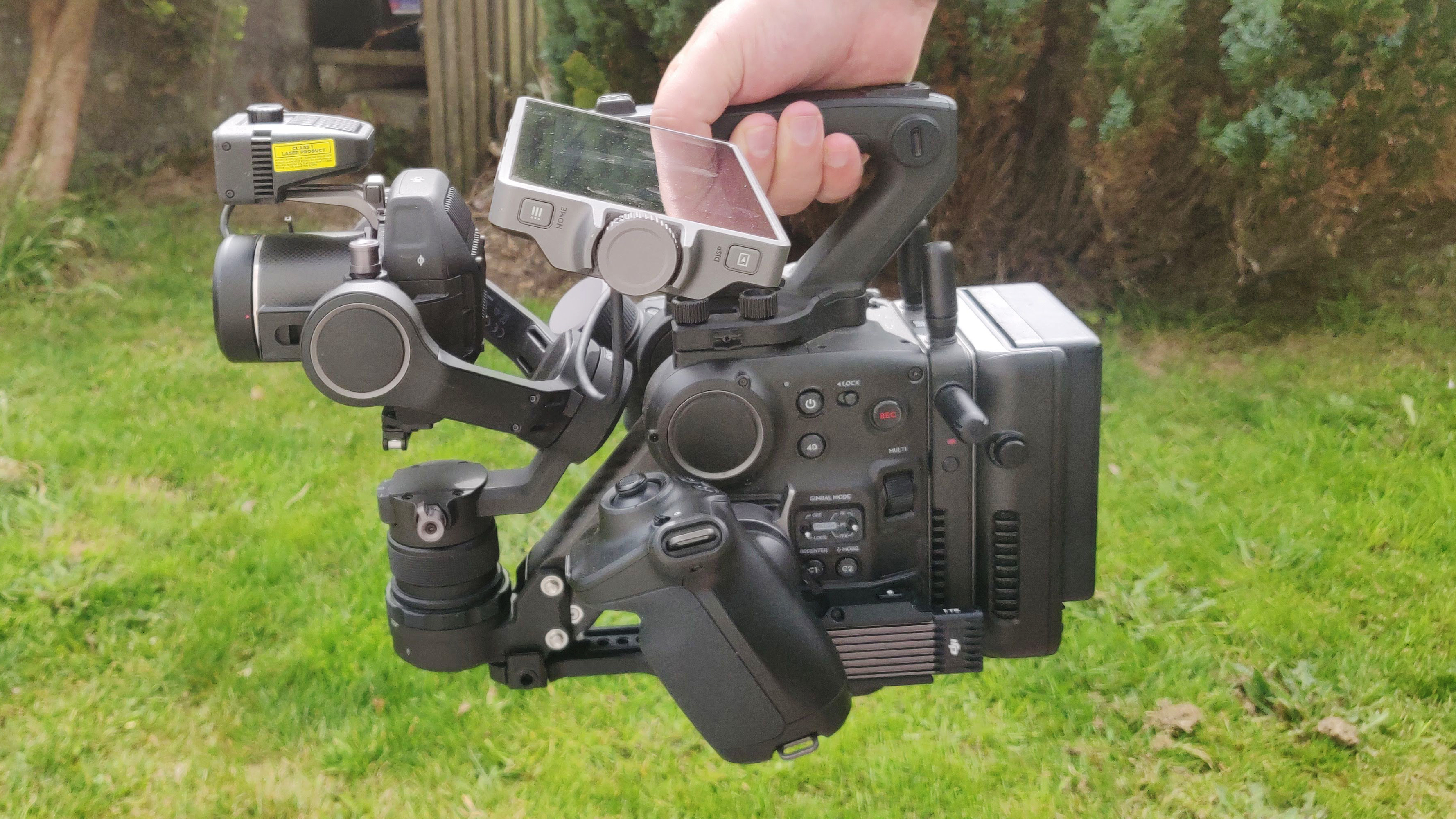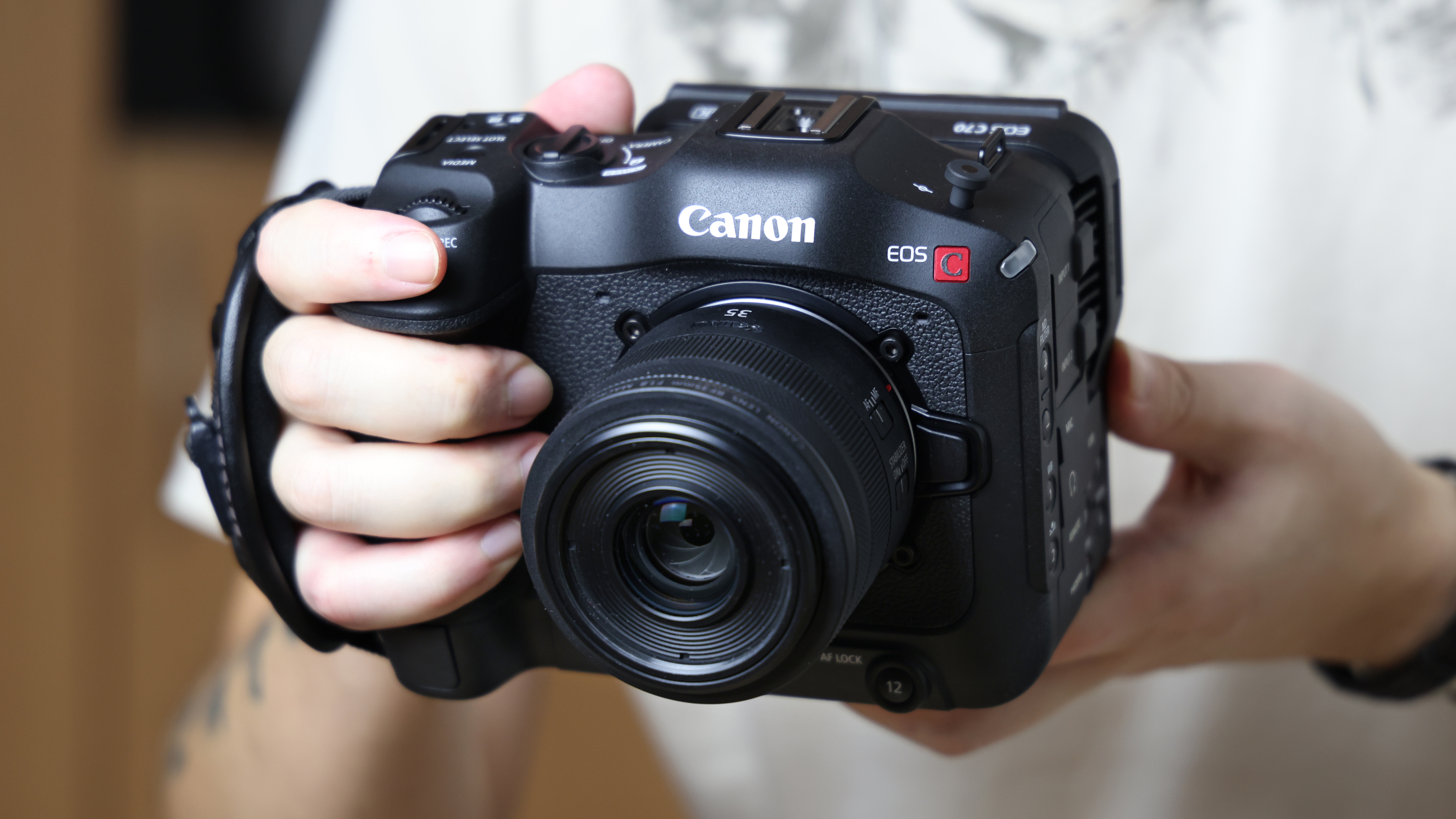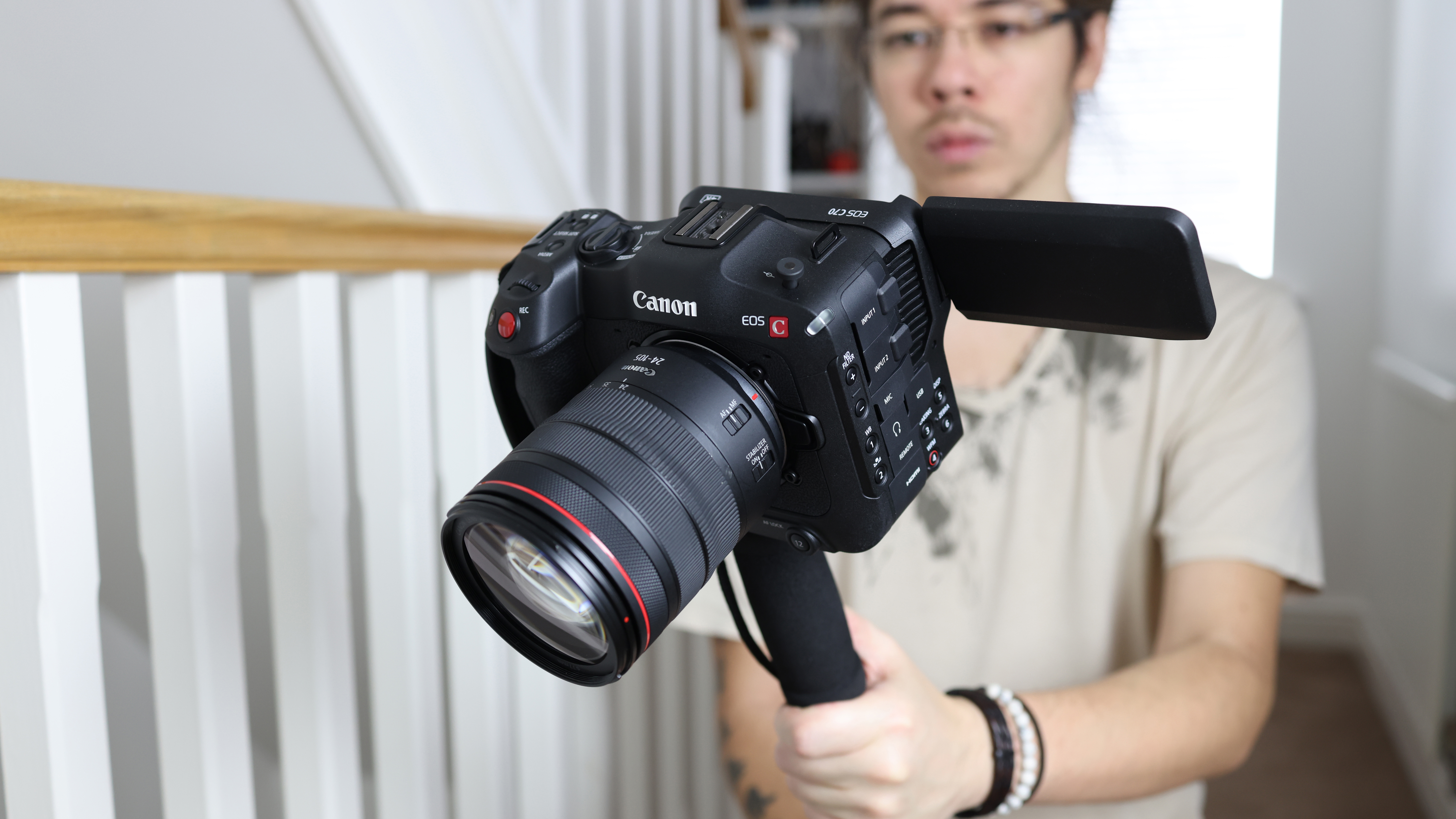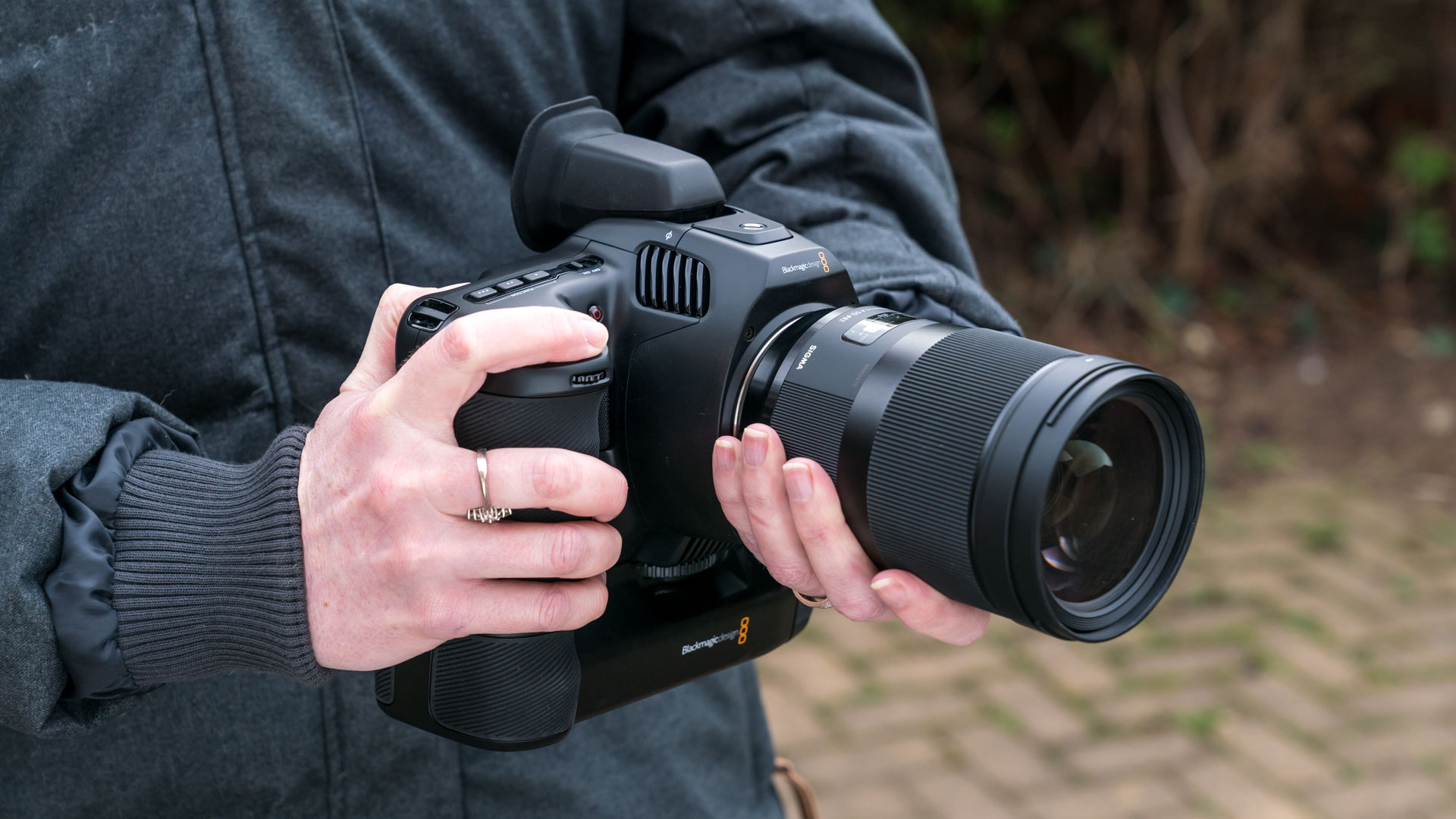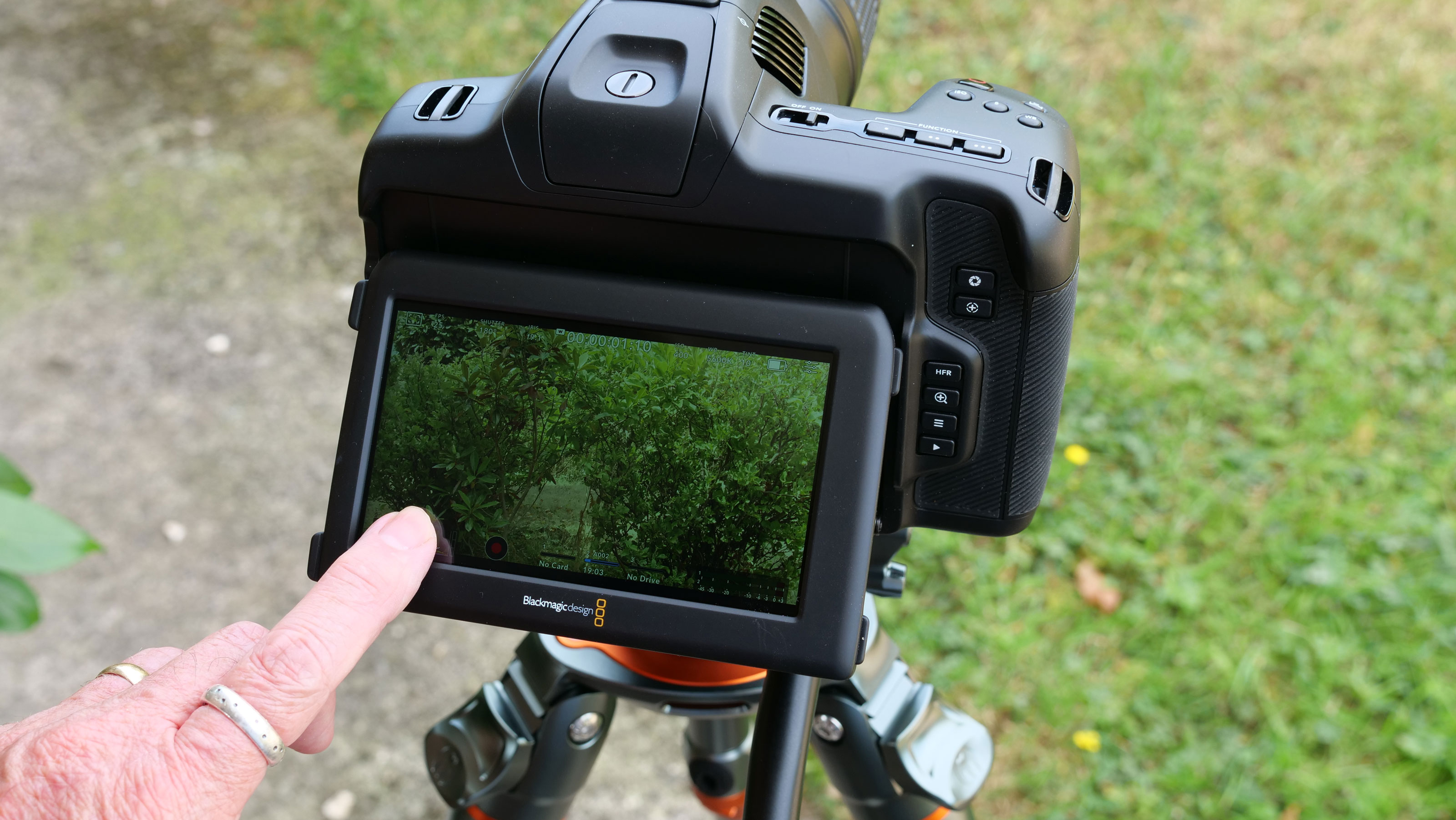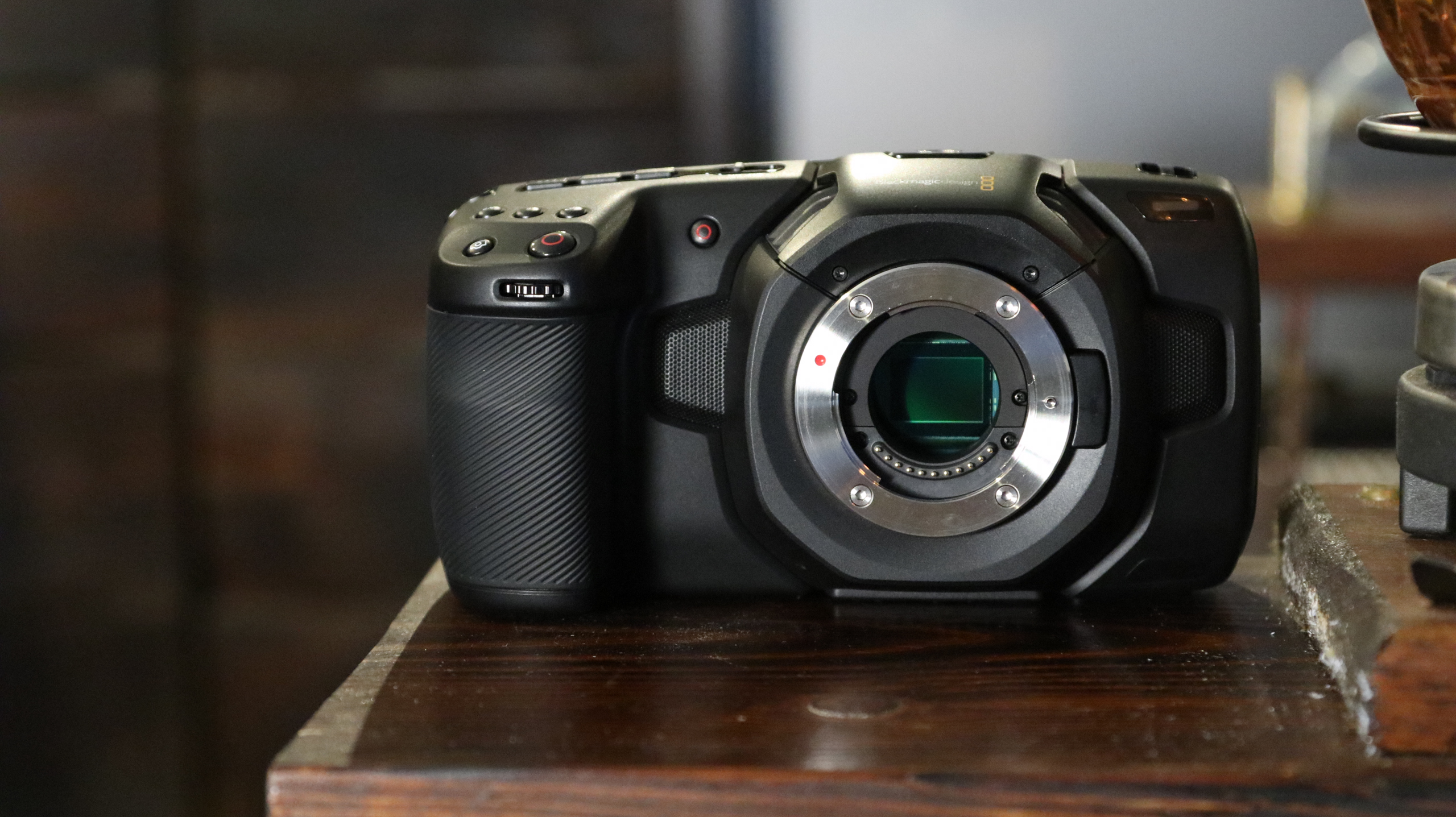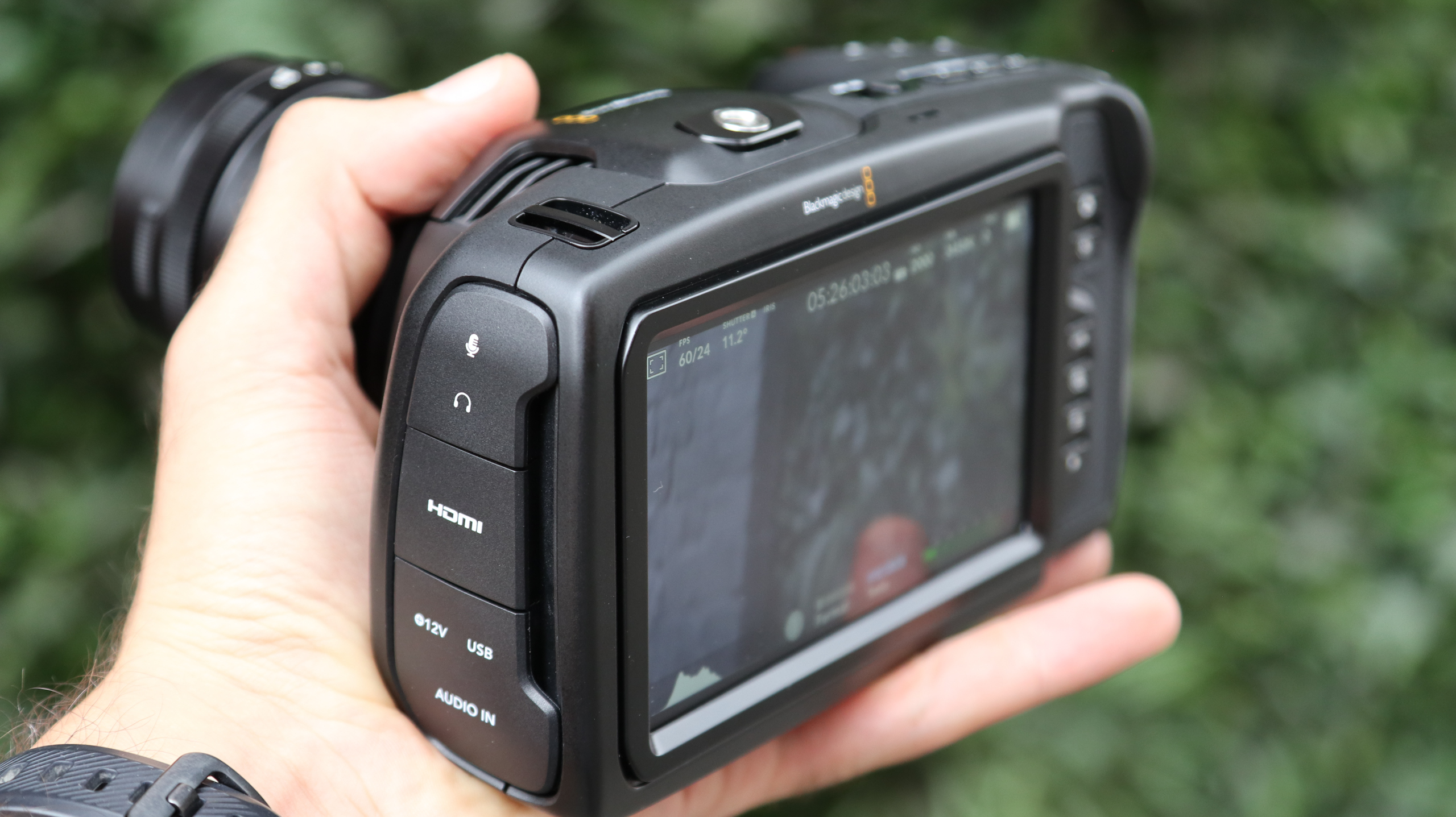The best cinema cameras in 2025: time to step up to serious filmmaking
The best cinema cameras offer top-quality video capture and grading options and the ports and connections needed by pros
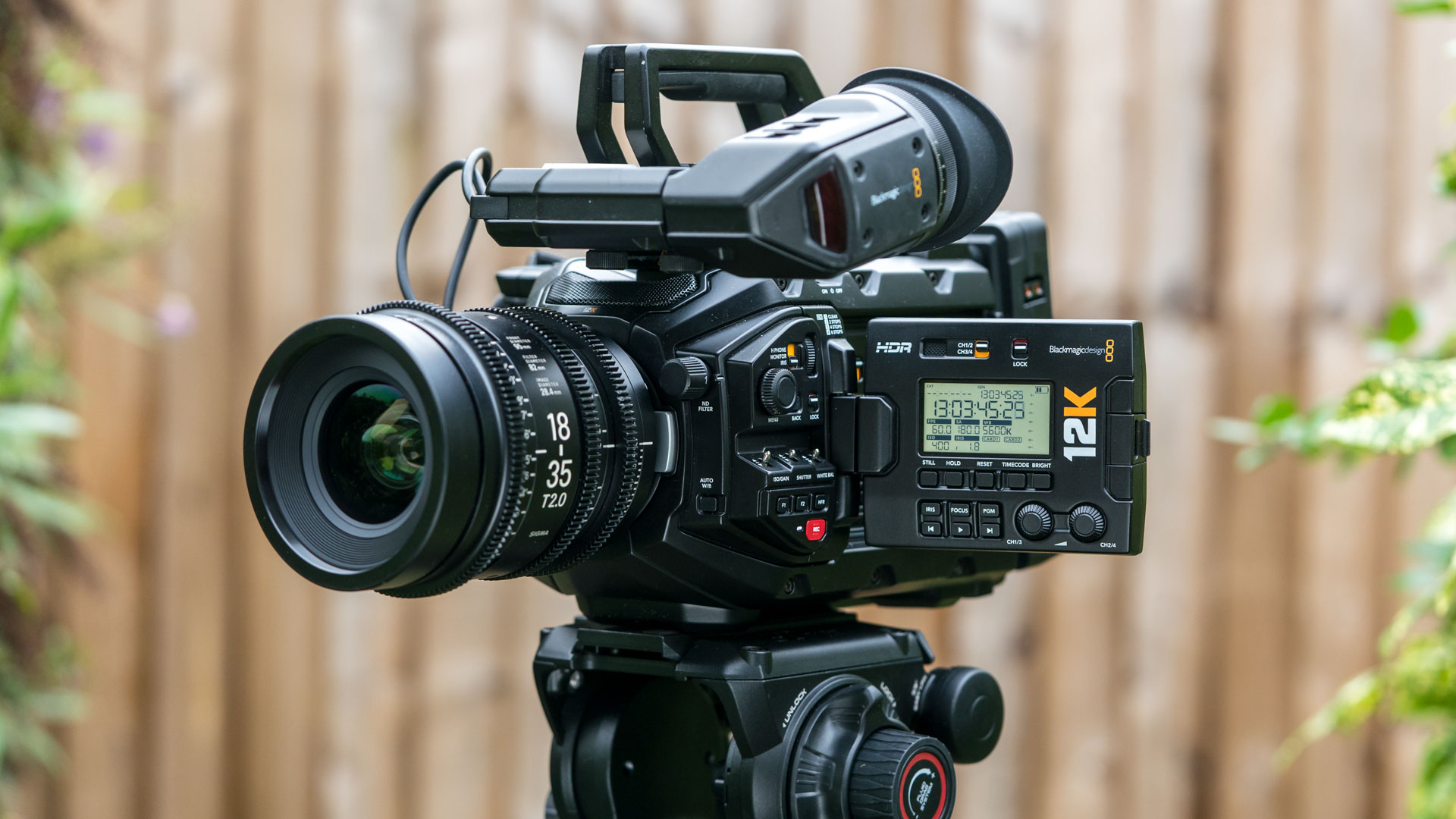
Having spent years exploring the world of video and cinema cameras, I’ve come to appreciate just how different cinema cameras are from standard mirrorless models. While their specs may seem similar on the surface, cinema cameras are purpose-built for high-end professional video production, offering superior connectivity, modular designs, and features tailored for collaborative workflows.
As the prices of “industry-standard” cine cameras continue to drop, these powerful tools are becoming more accessible to videographers looking to elevate their craft. While shooting in 6K, 8K, or even 12K is certainly exciting, the real game-changers lie in the form factor, advanced video codecs, and extensive connectivity options—essential elements for a seamless production experience.
One brand pushing the boundaries between consumer and cinema cameras is Blackmagic Design. The Pocket Cinema Camera 6K G2 is a standout example, capable of capturing stunning 6K RAW or Apple ProRes footage while supporting custom user LUTs. Even better, it comes bundled with DaVinci Resolve Studio—one of the industry’s top-tier editing programs (alongside Final Cut Pro and Adobe Premiere Pro)—all for under $2,000/£2,000. That kind of value is hard to beat.
While brands like Arri and Red dominate the ultra-high-end market, I’ve left them out of this guide, as their gear is often priced well beyond the reach of most filmmakers. Likewise, while many mirrorless cameras deliver impressive video quality, they lack the connectivity and workflow advantages of true cinema cameras. If you’re looking for hybrid stills-and-video options, check out our guides on the best cameras for filmmaking and the best cameras for video.
One of the most innovative cinema cameras today is the DJI Ronin 4D. Available in 6K and 8K versions, this “flightless drone” is the first cinema camera to feature 4-axis stabilization, significantly reducing the need for sliders or dollies by absorbing movement during walking or running shots—a game-changer for handheld cinematography.
To simplify this guide, I’ve divided it into two main categories:
Full-size cinema cameras: These are the professional workhorses of film and TV sets—larger cameras designed to be fully rigged with lenses, monitors, handles, and other accessories. They’re built for demanding workflows, with extensive connection ports and mounting options.
Portable cinema cameras: Pioneered by brands like Blackmagic, these compact yet powerful models pack professional-grade features into a smaller form factor. Canon and Sony have also entered this space, offering pint-sized cinema cameras perfect for indie filmmakers and run-and-gun shooting.
Cinema cameras are as diverse as the projects they’re used for, so finding the right one depends on your needs and creative vision. Whether you’re looking for a full-size setup or something more portable, there’s a cinema camera here to match your workflow.

Sebastian is familiar with and shows great interest in street, medium, and large format photography with products by Leica, Phase One, Hasselblad, Alpa, and Sinar. Sebastian has also used many cinema cameras from the likes of Sony, RED, ARRI, and everything in between. He now spends his spare time using his trusted Leica M-E or Leica M2 shooting Street photography or general life as he sees it, usually in Black and White.
Quick Picks
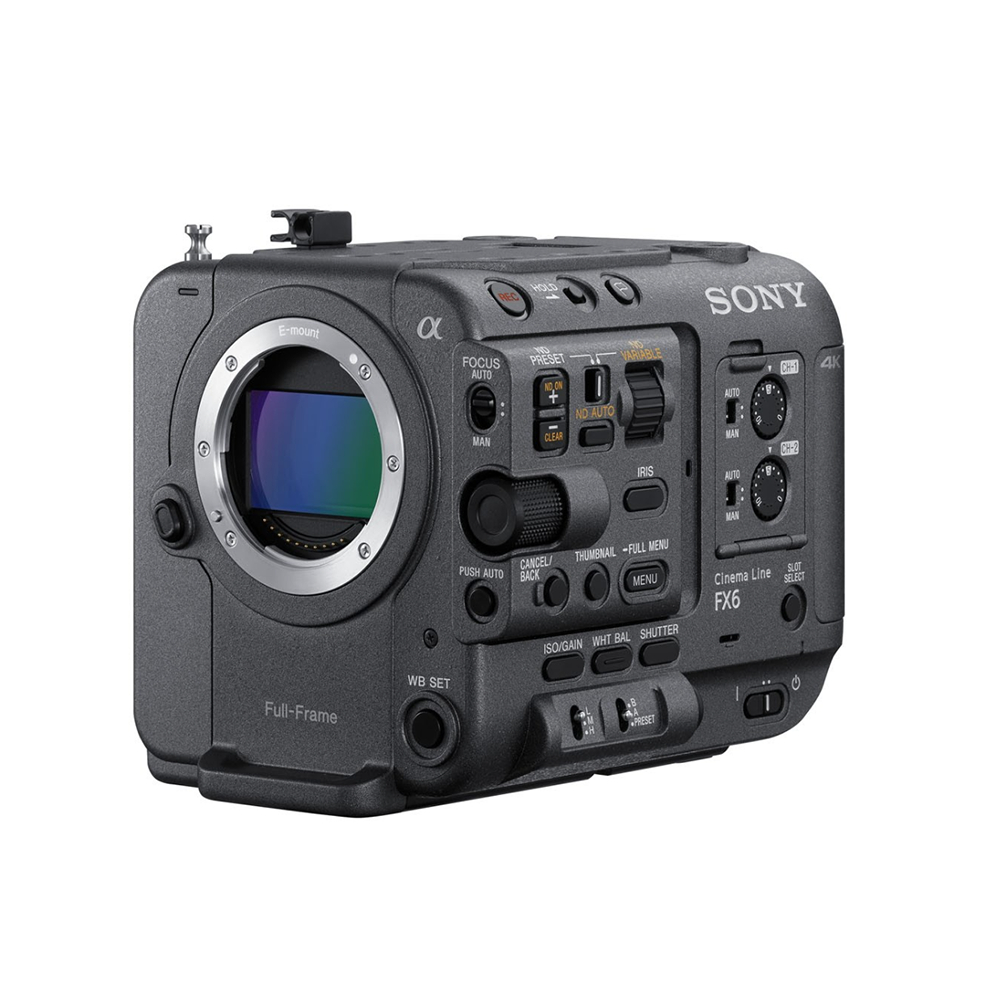
Despite the Sony FX6 not having 6 or 8K capabilities, we think the stunning 4K it outputs still makes it deserve the top spot. After all, unless you're cropping into the footage most TVs won't display it in all its glory anyway.
Read more below
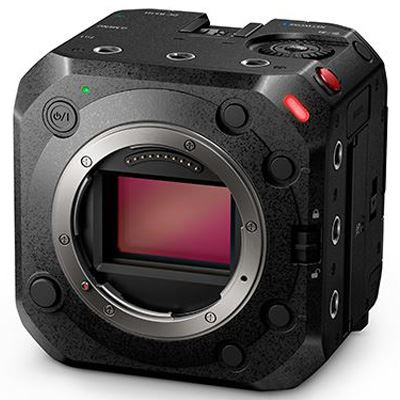
For serious video shooters, the Panasonic Lumix BSH1 box cam can make a lot of sense as it can be rigged up for a multitude of different uses.
Read more below
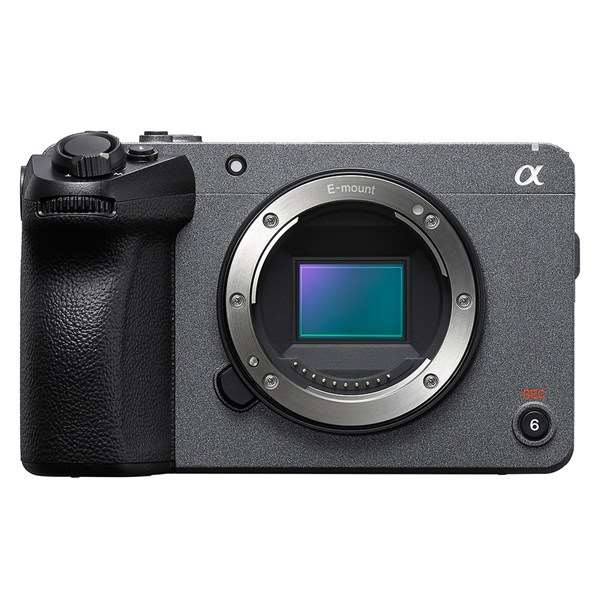
It’s always risky giving a camera a 5-star rating based on a fairly limited acquaintance, but unless something dreadful crawls out of the woodwork that we don’t know about yet, the FX30 deserves it.
Read more below
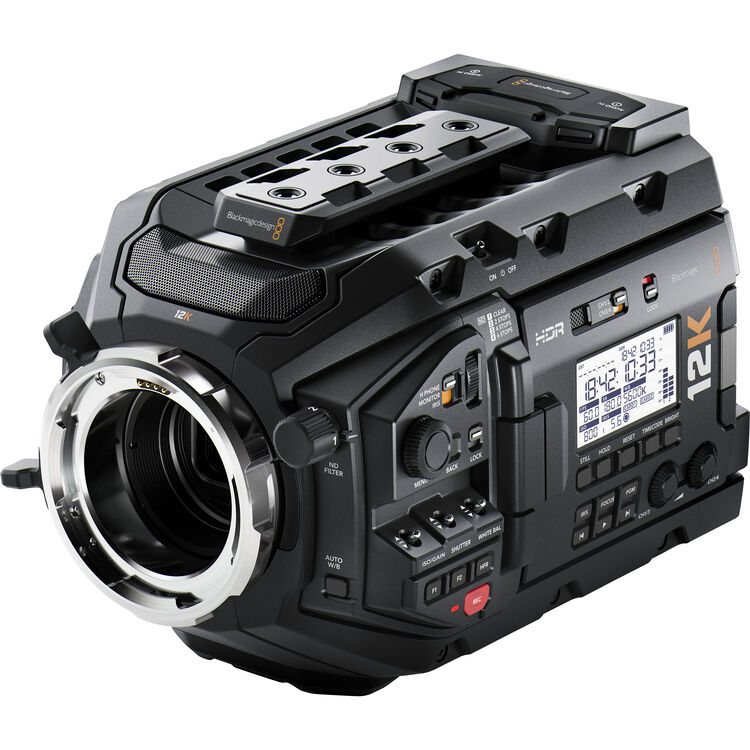
Suppose you're looking for the highest resolution camera that's great for post-production workflows or you want bragging rights. In that case, this 12K camera is the highest-resolution camera on the market.
Read more below
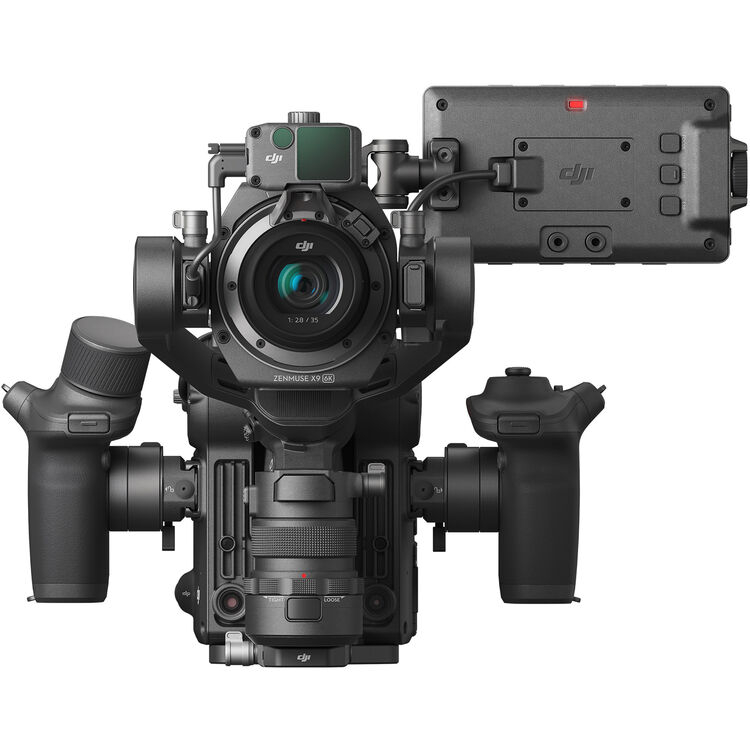
If you love shooting anything with a gimbal, why not have it all the time on your rig with this 4-axis camera that provides super smooth operation, all the time.
Read more below
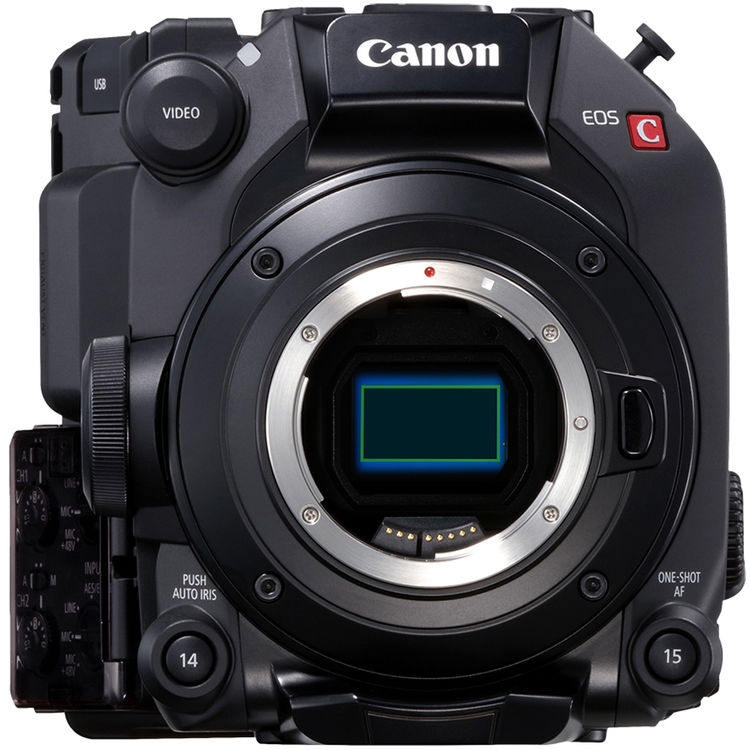
If you want to film Netflix-style docs that hit the big screen with a bang then the Canon EOS C300 Mark III is the best option that offers pro-grade features in a portable body.
Read more below
Best cinema cameras
Why you can trust Digital Camera World
Best bang for buck
Specifications
Reasons to buy
Reasons to avoid
✅ You want affordable 4K: 4K resolution, a handy design to rig for commercial or solo use - the FX6 is a great buy for the price.
✅ You want advanced AF: Most cinema cameras are all manual focus, so the Sony FX series is the best for those familiar with mirrorless cameras looking to upgrade
❌ You want internal RAW: RAW is an option but needs to be recorded via an external recorder.
❌ You want more than 4K: If you're looking for 6K or even 8K, the Sony FX6 isn't for you.
Despite the Sony FX6 not having 6K or 8K capabilities, we think the stunning 4K it outputs still makes it deserve the top spot. After all, unless you're cropping into the footage most TVs won't display it in all its glory anyway. It has the same sensor as the Sony A7S III only it's been improved to give a better low-light performance, the ability to shoot DCI 17:9 CRK (rather than just 4K) plus it has an XLR input, and built-in filters.
It also benefits from the traditional cine camera style handling so you can easily mount the best external monitors or one of the best mics. Even at high ISOs, it can shoot stunning, noise-free 4K, it has incredibly fast video AF, and shoots 10-bit internally.
If you're looking for something to travel with, the portability of the A7S III would be better but if it's for professional projects close to home we think the Sony FX6 is pretty unbeatable.
The one downside is it's still on pre-order so there's no saying when yours might arrive even if you order it today.
Read our full Sony FX6 review for more details
Specs | Outcome | Rating |
|---|---|---|
Resolution | 4K | ★★★★★ |
Dynamic range | 15 stops | ★★★★ |
Usability | solo, commercial, and Hollywood | ★★★★ |
Best box camera
Specifications
Reasons to buy
Reasons to avoid
✅ You want a versatile setup: with its handy square design, this cinema camera can be rigged to every scenario.
✅ You want 6K: This handy camera delivers stunning 6K full frame footage in a compact package.
❌ You want full-frame 4K60p: While it can shoot 4K 60p, it is only available when cropping into the full-frame image by using a Super35 image area.
❌ You want a screen: With no screen built-in you are forced to use an on-camera monitor
For serious video shooters, the Panasonic Lumix BSH1 box cam can make a lot of sense as it can be rigged up for a multitude of different uses. It has a 24.2-megapixel full-frame sensor with Dual Native ISO technology, 14+ stops of dynamic range, and an OLPH (Optical Low Pass Filter) which helps to suppress moire and false colors and make it excellent in low light. It's capable of recording 6K 24p or 4K 60p 10 bit when using an image area equivalent to Super 35mm. If you're using the entire 35mm sensor area, it can shoot 4K 30p 10-bit 4.2.2 in H.264.
With live streaming growing increasingly popular, the BS1H is capable of transmitting high-quality footage to social streaming platforms over a wired LAN collection. It can stream 4K 60p video in H.265 which means the bit rate is halved and the image quality is kept the same.
The lack of a screen may be off-putting but its modular system means you can easily attach an external recorder such as the Atmos Ninja V which will also make it capable of outputting 12-bit raw video.
Read our full Panasonic Lumix BS1H review for more details
Specs | Outcome | Rating |
|---|---|---|
Resolution | 6K | ★★★★★ |
Dynamic range | 14 stops | ★★★ |
Usability | solo, commercial, and Hollywood | ★★★★★ |
Best compact
Specifications
Reasons to buy
Reasons to avoid
✅ You want a compact setup: Its small size is the perfect cinema camera to use as an A cam
✅ You want LUTs: Offering LUTs of the best Sony cinema cameras in this ultra-compact body
❌ You want great IBIS: IBIS isn't effective which could leave you disappointed
❌ You want a big screen: Its 3-inch screen might feel small compared to other cameras
It’s always risky giving a camera a 5-star rating based on a fairly limited acquaintance, but unless something dreadful crawls out of the woodwork that we don’t know about yet, the FX30 deserves it.
This is a full-on cinema camera at a mirrorless camera price point and is perfectly positioned to help ambitious creators develop their professional skills.
The FX30 is a video-first camera but can still take 26MP stills, and it doesn’t just blow Sony’s aging A6000 series out of the water, it makes the FX3 look a bit limited too.
Read our full Sony FX30 review for more details
Specs | Outcome | Rating |
|---|---|---|
Resolution | 4K | ★★★★ |
Dynamic range | 14+ stops | ★★★ |
Usability | solo filmmaking | ★★★★ |
Best for resolution
Specifications
Reasons to buy
Reasons to avoid
✅ You want the best resolution: With12K resolution you can shoot first and re-rame later without losing a lot of quality
✅ You want a robust camera: This camera is built like a tank and is designed to be used by Hollywood - so it can take a lot of abuse.
❌ You want lightweight: this is a full-blown cinema camera which means it's a hefty 5.62 lb / 2.55 kg!
❌ You're computer RAM is low: With 12K resolution you will need a very powerful computer to take full advantage of these massive files
If you want a camera you can brag about, the Blackmagic Ursa Mini Pro 12K has earned bragging rights thanks to its astonishing 79.6-megapixel sensor. In fact, it's the highest-resolution cinema camera currently on the market and is capable of shooting 12K Blackmagic Raw files with 14 stops of dynamic range and a very filmic look.
If like us, the thought of the 12K file sizes sends a shiver down your spine, drop the resolution down to a more reasonable 8 or 6K, and not only is the quality still incredible but it can shoot at frame rates no other camera can. Based on the original Ursa Mini Pro, it does have a few features it's lacking, such as IBIS, phase-detection AF, continuous AF, and no other codecs except RAW. It's definitely a camera aimed at experienced cinematographers who want complete control when shooting rather than someone who wants a camera to suit everything.
Read more: Blackmagic Ursa Mini Pro 12K review for more details
Specs | Outcome | Rating |
|---|---|---|
Resolution | 12K | ★★★★★ |
Dynamic range | 14 stops | ★★★★ |
Usability | Commercial / Hollywood | ★★★★★ |
Best all-in-one package
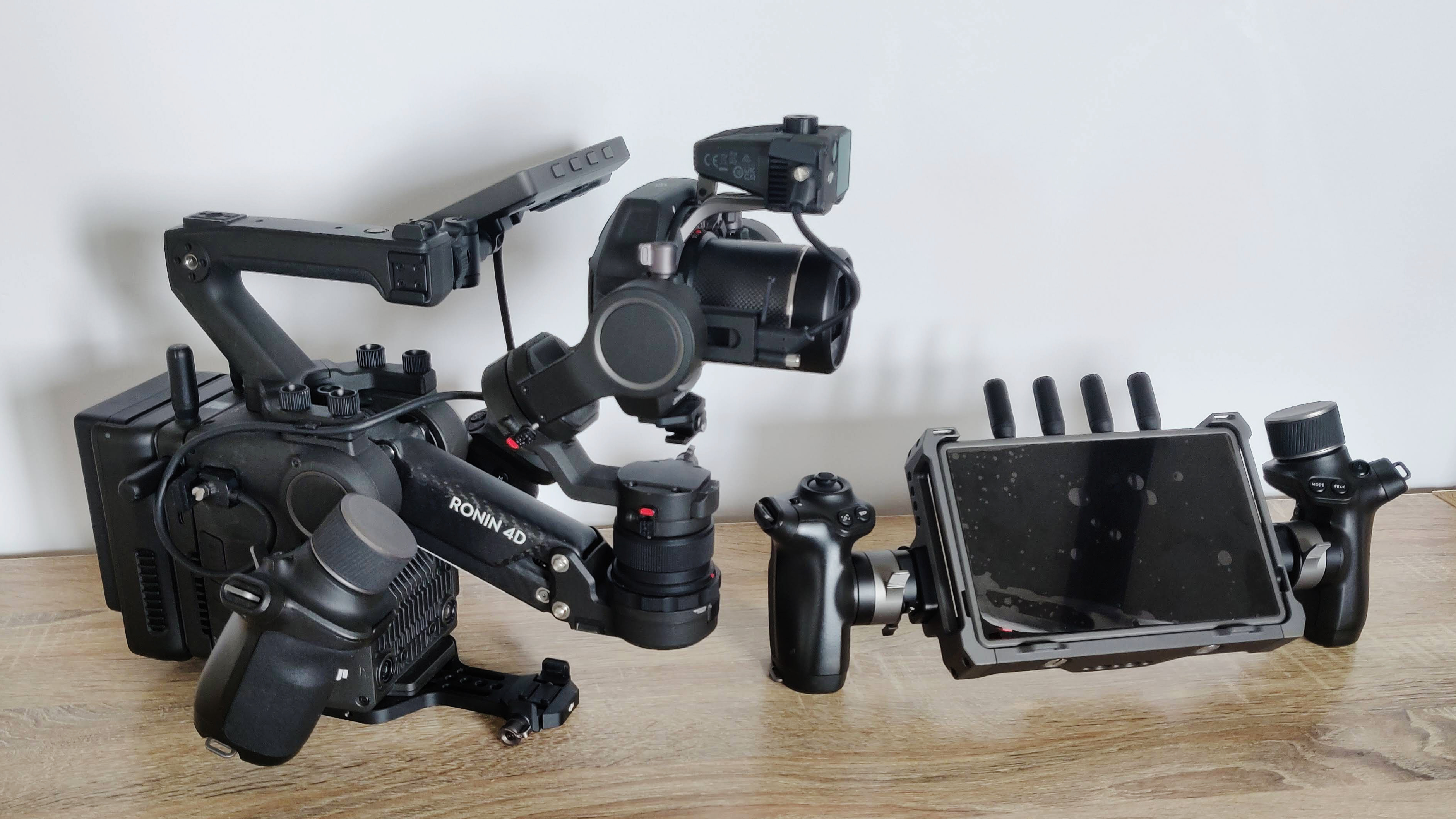
Specifications
Reasons to buy
Reasons to avoid
✅ You want smooth footage: with its built-in gimbal your footage will be smooth all the time
✅ You want built-in NDs: This camera offers built-in Nutral Desitiy filters that can change at a scroll of a wheel - perfect for the solo filmmaker on the go
❌ You like the handheld look: While you can lock the gimbal, there are better alternatives on the market.
❌ You want to use third-party accessories: This is a very niche camera and you can only get the accessories from DJI
Should we consider this a full-size or a portable cinema camera? It's designed for portable use, but it's quite a size. The DJI Ronin 4D 6K is unlike any other cinema camera out there.
You almost have to think about it in two parts - the body which consists of all the camera controls, screen, and gimbal arm, and then the DJI Zenmuse X9 camera. It's not a light bit of kit weighing almost 5kg but you've got to remember you won't need to add much weight to it as you would with other cinema cameras as it has a gimbal with 4-axis of stabilization built in.
It's definitely a different type of camera to get used to that will require some learning but for cinematographers who find themselves always using a gimbal or stabilization rig, it's well worth looking into.
It's also available in an 8K version for those who want even better resolution although is still able to record in ProRes 422 HQ and H.264 4:2:0 10-bit at various different frame rates (check out the review to see the full list).
Perhaps this is the future of cinema cameras, taking a more hybrid approach rather than needing modular systems where you need an additional kit. If you're new to videography and looking for an all-in-one package, it's certainly a good way of entering the world of film with a camera that can shoot anything, anywhere.
Read our full DJI Ronin 4D 6K review for more details
Specs | Outcome | Rating |
|---|---|---|
Resolution | 6K | ★★★★ |
Dynamic range | 14 stops | ★★★★ |
Usability | Solo filmmaking | ★★★★★ |
Best for documentaries
Specifications
Reasons to buy
Reasons to avoid
✅ You want huge ISO performance: For those who want to shoot in any environment the C70's ISO performance is amazing
✅ You want 4K slo-motion: With 4K 120p this is a great camera to offer slo-mo - it can even do 180fps in 2K!
❌ You want to use PL lenses: Equipped with an RF mount it limits you to RF-only lenses
❌ You want RAW: No RAW output might put off some documentary filmmakers
The Canon EOS C70 is like a remixed C300 Mark III. It packs the same Super35 sensor, Dual Gain Output, 16 stops of dynamic range, and 4K 120fps / 2K 180fps performance into a compact form factor more like a traditional stills camera.
It also packs a touchscreen that changes the game for Cinema EOS cameras, with touch control making it so much easier to maintain focus. For lone shooters, the C70 boasts the iTR AFX system from the Canon EOS-1D X Mark III, with head detection and spookily accurate autofocus.
The only cinema camera to use Canon's RF mount, it opens up a world of cutting-edge optics – and not only can you still use EF lenses, but a new Canon speed booster enables you to use them with an extra f-stop and a full-frame angle of view!
However, it doesn't record in raw and there's no option to use PL lenses – for that, you'll need to step up to the C300. For now, the C70 seems to be out of stock in most retailers but we're hoping it's just a supply chain issue and they'll be back soon.
Read our full Canon EOS C70 review for more details
Specs | Outcome | Rating |
|---|---|---|
Resolution | 4K | ★★★★ |
Dynamic range | 16 stops | ★★★★★ |
Usability | Solo filmmaking | ★★★★★ |
Best 6K option
Specifications
Reasons to buy
Reasons to avoid
✅ You want RAW: The BMPCC 6K Pro offers amazing RAW capabilities to offer super control over color grading
✅ You want a big screen With a massive rear screen you can easily adjust any setting with a touch
❌ You want autofocus: No autofocus here, just the cine standard manual focus - so get practicing!
❌ You want a tilting screen: While the screen is massive, unforgivably is does not tilt, which would be useful
We've just finished reviewing the Blackmagic Pocket Cinema Camera 6K G2, the new, 'entry level' 6K model, and it boasts many of the features in this Pro version. However, it's still the Pro model we would go for because for a little extra outlay, it offers a brighter screen and built-in ND filters.
The Blackmagic Pocket Cinema Camera 6K Pro is an evolution of the original 6K model, but while it might look like a mirrorless camera in its shape, you do have to get used to the handling from the odd size and large shape of the Super35mm Blackmagic Pocket Cinema Camera 6K Pro – which is certainly far from being pocket size. And the lack of continuous autofocus, image stabilization, or any auto-exposure can be an issue for some. It’s definitely not a run-and-gun camera. But if you use it as a tool for considered, cinematic shooting then it’s a bit of a steal as it produces rich, detailed files in raw or ProRes from its dual native ISO sensor.
Read our full Blackmagic Pocket Cinema Camera 6K Pro review
Specs | Outcome | Rating |
|---|---|---|
Resolution | 6K | ★★★★★ |
Dynamic range | 13 stops | ★★★ |
Usability | Solo filmmaking | ★★★★ |
Best for film Students
Specifications
Reasons to buy
Reasons to avoid
✅ You're a student: This MFT camera offers all the controls you need to learn the craft of filmmaking
✅ You want a RAW: At this price range having RAW is a godsend and will help you learn from possible mistakes
❌ You want full XLR support: While mini-XLR is supported you will need an adaptor to support full XLR mics which can cause a wired mess
❌ You want a tilting screen: While the screen is massive at 5-inches, it offers no tilt or cover from the sun
The Blackmagic Pocket Cinema Camera 4K looks great value for money today and it's an intriguing alternative for Olympus or Panasonic users who've already invested in MFT lenses.
It has some disadvantages, such as no continuous AF and a fixed screen, but this is a cinema camera, not a vlogging camera. It always comes back to bang for the buck with the Pocket Cinema Camera 4K.
When you consider the fact you have a mini XLR audio input as well as USB-C storage support for recording to hard drives, a full-sized HDMI port, and dual card slots, the Pocket Cinema Camera 4K leapfrogs the competition in almost every video-centric area.
Considering that the camera also ships with a full license for Davinci Resolve, an excellent bit of pro-video-editing software that normally costs $295/£239, the Pocket Cinema 4K is quite a bargain.
Read our full Blackmagic Pocket Cinema Camera 4K review
Specs | Outcome | Rating |
|---|---|---|
Resolution | 4K | ★★★★★ |
Dynamic range | 13 stops | ★★★ |
Usability | solo filmmaking | ★★★★ |
Mirrorless vs cinema cameras: what's the difference?
The definition of a cinema camera isn’t always clear-cut. Some argue it’s any camera designed specifically for video rather than stills, while others point to factors like size, lens mount, or the ability to shoot in RAW or ProRes.
New Form Factors
Hybrid cameras are blurring the lines between stills and cinema. Take the Sigma fp and Sigma fp L—both are stills/video hybrids, but their modular form factor and cine-focused interface make them worthy contenders in this space.
8K Isn’t Everything
High resolution often grabs headlines, as seen with the Canon EOS R5 and Sony A1, both of which offer 8K recording. However, these are still primarily stills cameras with video capabilities, not dedicated cine cameras. If you’re looking for true cinema tools, models like the Canon EOS C70 or Sony FX3 are better suited to professional filmmaking.
Cinematography vs. Filmmaking vs. Vlogging
If you’re searching for the best vlogging camera, the models in this guide will likely be overkill. Not only are most of them expensive, but they also require technical expertise to get the best results. If you need a more versatile camera, our guides on the best mirrorless cameras or best cameras for video may be more helpful.
This guide focuses on cameras built specifically for professional film and TV production. To keep things organized, we’ve divided it into two sections:
High-end, modular cinema cameras – These are your "A" cameras, designed for professional sets with top-tier specs and extensive customization options.
Portable cinema cameras – These serve as "B" cameras, perfect as backups in professional environments or as primary cameras for independent filmmakers and solo video shooters ready to take their work beyond vlogging.
Whether you're looking for a full-fledged production setup or a compact but powerful alternative, there’s a cinema camera here to match your creative needs.
How we test cameras
We test cameras both in real-world shooting scenarios and in carefully controlled lab conditions. Our lab tests measure resolution, dynamic range and signal to noise ratio. Resolution is measured using ISO resolution charts, dynamic range is measured using DxO Analyzer test equipment and DxO Analyzer is also used for noise analysis across the camera's ISO range. We use both real-world testing and lab results to inform our comments in buying guides.
Read more:
Best cine lenses
Best 8K camera
Best 4K camera for filmmaking
Best audio recorders
Best video editing software
The best laptop for video editing
Best camera sliders
The best on-camera monitors
The best camera deals, reviews, product advice, and unmissable photography news, direct to your inbox!

For nearly two decades Sebastian's work has been published internationally. Originally specializing in Equestrianism, his visuals have been used by the leading names in the equestrian industry such as The Fédération Equestre Internationale (FEI), The Jockey Club, Horse & Hound, and many more for various advertising campaigns, books, and pre/post-event highlights.
He is a Fellow of the Royal Society of Arts, holds a Foundation Degree in Equitation Science, and holds a Master of Arts in Publishing. He is a member of Nikon NPS and has been a Nikon user since his film days using a Nikon F5. He saw the digital transition with Nikon's D series cameras and is still, to this day, the youngest member to be elected into BEWA, the British Equestrian Writers' Association.
He is familiar with and shows great interest in 35mm, medium, and large-format photography, using products by Leica, Phase One, Hasselblad, Alpa, and Sinar. Sebastian has also used many cinema cameras from Sony, RED, ARRI, and everything in between. He now spends his spare time using his trusted Leica M-E or Leica M2, shooting Street/Documentary photography as he sees it, usually in Black and White.
